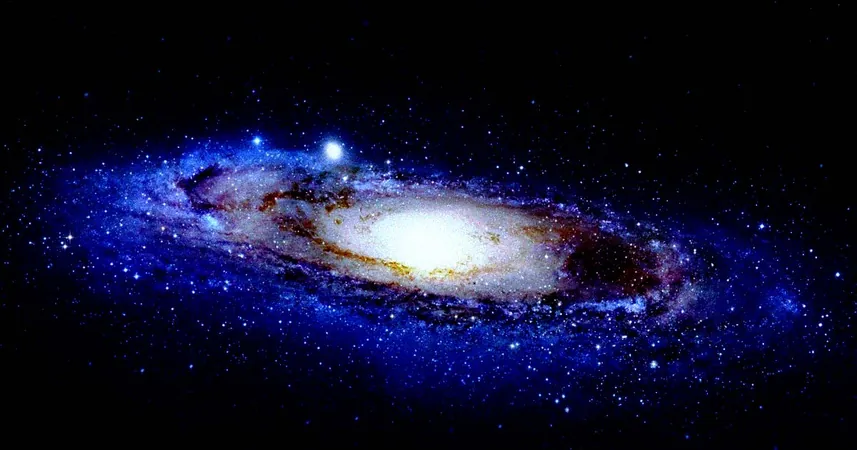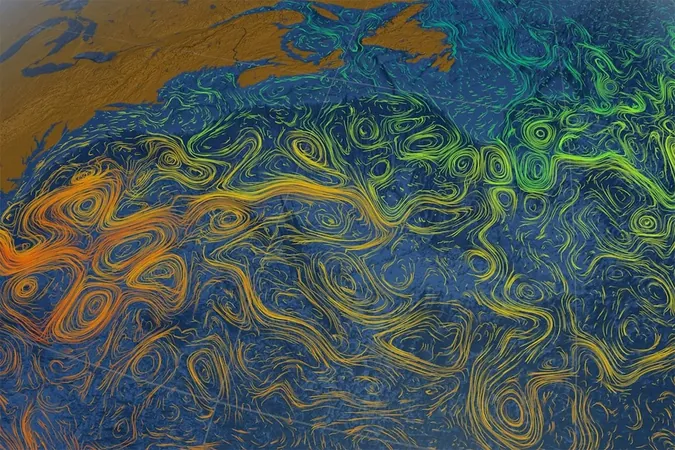
Why is the Milky Way Such an Oddball in the Universe?
2024-11-29
Author: Ting
A Surprising Outlier in the Cosmos
Astrophysicists from the Satellites Around Galactic Analogs (SAGA) survey have recently published three groundbreaking papers in The Astrophysical Journal, analyzing a trove of data comparing the Milky Way to 101 other galaxies of similar mass. To their astonishment, they discovered that our galaxy possesses significantly fewer smaller satellite galaxies than its counterparts; moreover, many of these satellites have mysteriously halted star formation. “Now we have a puzzle,” stated Risa Wechsler, a Stanford professor of astrophysics and co-founder of SAGA. “What in the Milky Way caused these small, lower-mass satellites to have their star formation quenched?”
A Shift in Understanding Galactic Evolution
This intriguing finding opens the door to reconsidering how galaxies evolve. The differences highlight that the Milky Way's evolutionary history is radically different from that of similar galaxies. “Our results show that we cannot constrain models of galaxy formation just to the Milky Way,” Wechsler noted. “We have to look at the entire distribution of analogous galaxies across the universe.” At the heart of their findings lies the elusive dark matter, a substance that scientists believe constitutes about 85 percent of the universe's mass, yet remains invisible to instruments. Current theories suggest dense halos of dark matter are pivotal in galaxy formation, providing the gravitational allure necessary for ordinary matter to coalesce. Wechsler posits an intriguing theory: “Perhaps the Milky Way has a unique blend of older satellites that have stopped forming stars, alongside newer, active ones that have only recently entered the Milky Way's dark matter halo.” When examining a sample of 378 small satellite galaxies orbiting the larger galaxies, the team found that a striking 50% of the Milky Way's satellites have ceased forming stars—unlike most other galaxies, whose satellites continue to produce new stars at a healthy rate.
The Big Question: What Makes Us Different?
This raises a captivating question: What makes our galaxy so different from others? "I see the frontier as discovering what dark matter is doing on smaller scales than the Milky Way, particularly with the smaller dark matter halos that surround these little satellites," Wechsler remarked. The implications of this research are far-reaching, potentially reshaping our understanding of galaxy formation and evolution throughout the cosmos. As curiosity about the universe intensifies, one ancient galaxy, eerily reminiscent of the Milky Way, continues to spark excitement and mystery among astronomers. Could the Milky Way hold the key to unraveling the secrets of dark matter and the evolution of galaxies? The cosmic puzzle is just beginning to unfold. Stay tuned as scientists dig deeper into our galaxy’s unique structure and the enigmatic role of dark matter!



 Brasil (PT)
Brasil (PT)
 Canada (EN)
Canada (EN)
 Chile (ES)
Chile (ES)
 España (ES)
España (ES)
 France (FR)
France (FR)
 Hong Kong (EN)
Hong Kong (EN)
 Italia (IT)
Italia (IT)
 日本 (JA)
日本 (JA)
 Magyarország (HU)
Magyarország (HU)
 Norge (NO)
Norge (NO)
 Polska (PL)
Polska (PL)
 Schweiz (DE)
Schweiz (DE)
 Singapore (EN)
Singapore (EN)
 Sverige (SV)
Sverige (SV)
 Suomi (FI)
Suomi (FI)
 Türkiye (TR)
Türkiye (TR)